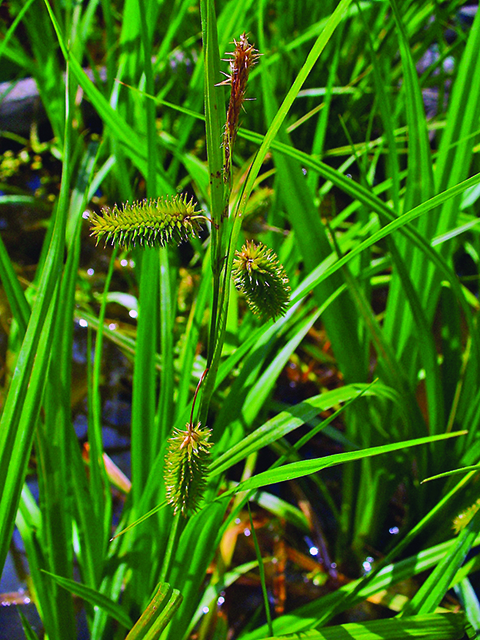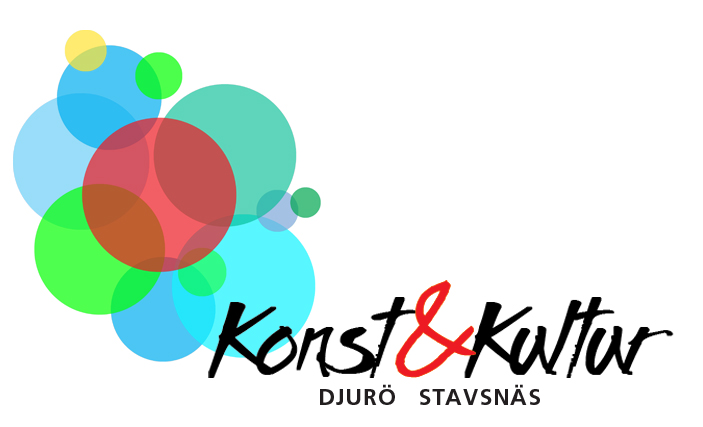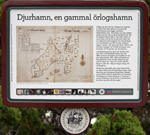Nature and Culture Trail Hamnskogen
6. Herbs in the Forest

Among the flowers that grow by the roadside we find wild scentless mayweed, haresfoot clover, common lady’s mantle, Timothy-grass, field bindweed, and St. John’s wort. In the forest you’ll also find water avens, wild strawberry, wood club-rush and meadow-buttercup.
Rhododendrum Tomentosum or Wild Rosemary, has white flowers with a characteristic scent. It’s said that you can keep mosquitoes away by rubbing it on your skin – a useful tip when visiting Eriksberg’s forest.
Hare’s Tail Cottongrass, Eriophorum Vaginatum, likes bog soil and is common throughout most of Sweden.
One-flowered Wintergreen, Moneses Uniflora, grows in shaded spruce forest.
Looking for plants, photographing and drawing them, finding out their Latin names, which ones are edible or which ones have been used for medicinal purposes – these are some of the things the forest lets you do for free.
A rare plant found in the forest here is hop sedge. It grows in a sunny glade and is bright green with flat leaves and hanging spikes. Its broad leaves were formerly used for sealing barrels. Have you seen one? Be careful!
Every plant has a Latin name. In the 18th century, the Swedish scientist Linnaeus studied and organised them giving them all a name in Latin. Among our commonest Swedish flowers are Anenome Hepatica, Tussilago Farfara and Trifolium Pratense. Do you know what they’re called in your language?
Continue along Eriksbergsvägen until you reach stop number 7.












